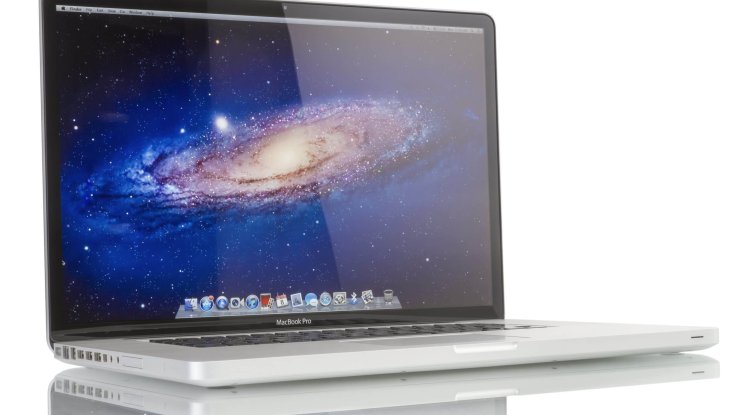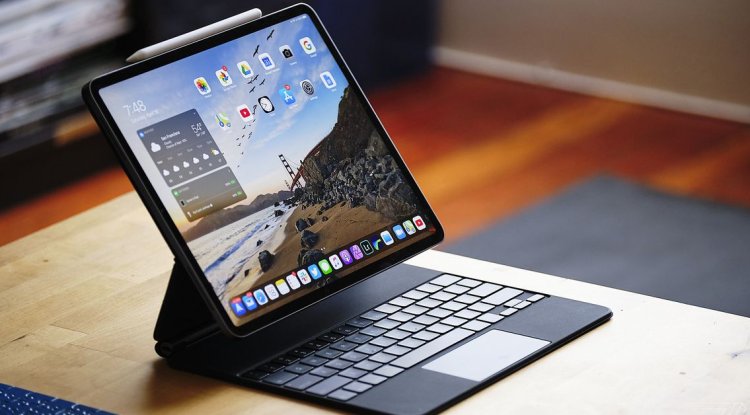New Apple M2 Chip: Everything you need to know

With the arrival of the M1 chip in the 24in iMac, 13in MacBook Pro, Mac mini, and MacBook Air in 2020, Apple began employing its own desktop processors in some of its Mac lines. Since then, we've seen the introduction of the Pro level versions in the form of the M1 Max and M1 Pro, which debuted in the 14 MacBook Pro and 16in MacBook Pro models in October 2021.
Rumors concerning Apple's second-generation silicon are starting to circulate. We've included all of the latest news and opinions on what to anticipate from the Apple M2 system-on-chip.
Release date
The M2 chip has no specific release date or even official word from Apple. But we know Apple isn't one to rest on its laurels, as evidenced by the yearly iteration of the A-series CPUs that have powered the iPhone for the last several years.
The majority of the rumors we've heard about the M2's likely release date seem to be tied to the next generation of the MacBook Air. The MacBook Air (2020) M1, which was released in November 2020, was one of the first to migrate to the M-series. According to rumors, the MacBook Air (2022) would be the first to showcase Apple's new silicon design.
The possibility of M2 arriving in the first part of the year has begun to fade. However, it is possible: according to a MacRumors source, who claims to have provided facts about the MacBook Pro notch ahead to the October 2021 presentation.
Ming Chi-Kuo, an industry heavyweight, believes the new device will not appear until the third quarter of 2022, but with a colorful new look similar to what we've previously seen with the 24in iMac (2021).
Another reason not to expect the M2 before the fall is that Apple is supposed to be beefing up the production process.
While the manufacturing method will remain at 5 nanometers, Apple is rumored to use TSMC's next-generation N4P technology, which is an improved version of the 5-nanometer process. When compared to the conventional 5-nanometer technology, this new technique is expected to give around 11 percentage points greater performance and nearly 22 percentage points more efficiency.
Features and spec
The M1 Pro and M1 Max processors (or SoCs, to be more precise) concentrated on performance upgrades, with the M1 Pro being almost twice as fast as the M1 when it comes to graphics operations, and the M1 Max being even faster.
This was due to the additional cores in the newer CPUs and more powerful GPUs, as well as the fact that Apple was able to fit nearly twice as many transistors into the M1 Pro as the ordinary M1's 16 billion transistors.
This is fantastic if you work in video or graphic design and require the fastest speed from your Mac. However, this type of speed obviously comes at a cost that most users cannot afford, and they don't need that kind of gear to surf the web, watch Netflix movies, keep up with pals on social media, or work from home on papers and spreadsheets.
As a result, the current expectation is that the M2 processor series will be geared at consumers rather than professionals, and as such, will focus more on energy saving as well as general performance gains over the M1 it will replace.
M2 CPUs
According to some reports, Apple will keep the same 8 CPU cores as the M1 but may add more GPU cores to boost the M2's capabilities. For example, Bloomberg's Mark Gurman speculated in May 2021 that the M2 (supposedly codenamed Staten) will have the same eight cores as the M1 CPU but will be quicker.
The previously reported N4P technique should allow for a 6% increase in transistor density, allowing Apple to fit 10 CPU cores into the M2 (two more than in the M1). Individual cores could be clocked slightly faster than in the M1.
Another option is that Apple will do to the M2 CPU what it did to the M1 Pro and M1 Max, both of which have 10-core processors. Whereas the M1 has four high-performance cores and four high-efficiency cores, the M1 Pro and Max have twice as many high-performance cores (eight) but fewer efficiency cores (two). The next-generation M2 could include more high-efficiency cores.
M2 GPUs
Apple may also boost GPU performance to nine or ten graphics cores, which is two more than the current M1.
According to the above-mentioned source, the M2 would include a growth in the number of GPU cores from 7 or 8 to nine or 10.
RAM
There will undoubtedly be those who wish for the M2 to enable more RAM than the M1 presently does (the M1 maxes out at 16GB RAM, while the M1 Pro can support 32GB and the M1 Max 64GB). The M2 is unlikely to support 32GB RAM, which is definitely unnecessary for such a Mac. However, we would want to see the price of the 16GB RAM update drop.
Battery Life
As with any iterative upgrade, we expect the M2 to outperform the M1 in terms of battery life and power efficiency.
Which Macs will get the M2 processor?
When describing the M2 chip, Gurman stated that it would be used in the forthcoming MacBook Air as well as an update to the low-end 13in MacBook Pro.
Following the introduction of the supercharged M1 Pro and M1 Max processors in the new MacBook Pros, we believe the M2 will be the processor used in consumer-level Macs.
As a result, we anticipate M2 updates for the MacBook Air, Mac mini, and 24in Mac to arrive within the next year or two. Furthermore, with the iPad Pro currently sporting the M1 processor, it is possible that the projected iPad Pro (2022) may use the M2 chip rather than the M1 Pro or M1 Max. That will be fascinating to watch, and hopefully, it won't be too long before we can test out the new silicon and see what changes Apple has made.
What about the M2 Pro and M2 Max?
There will be readers who want to know what the Pro and Max models of the M2 have in store. The M1 Pro and M1 Max have already proven to be extremely capable, so there are high hopes for the next generation of these devices.
However, we may not have to wait until the next generation to acquire Macs with even better Apple processors. One of the most intriguing hypotheses at the moment is that the replacement for the 27-inch iMac and the Intel model of the Mac mini could double up the M1 Pro or M1 Max for even more CPU and GPU cores and RAM.
And the M3...
We have no doubt that the M2 will be fantastic, but just a year later, we could see something even better that will provide an even greater leap in performance over the current generation.
According to Digitimes, TSMC is evaluating processors produced using the 3nm technology, which could allow for even higher transistor density, and these are likely to be intended for the M3 and A17 CPUs. Due to the complexity of the technology, TSMC had already had to postpone its 3nm goals.
So according to Digitimes, the first devices based on the 3nm processor will be available in the first quarter of 2023, with mass manufacturing beginning at the end of 2022.
Qualcomm, Samsung, and Intel have all announced plans to employ the 3nm process.
The M3 chip is expected to provide considerable performance improvements over the M1 processors, with the high-end chips being manufactured with two boards and offering up to 40 CPU cores.
According to The Information, Apple's M3 chips are codenamed Ibiza, Lobos, and Palma. https://www.youtube.com/watch?v=vwRoiOyOF6o





































